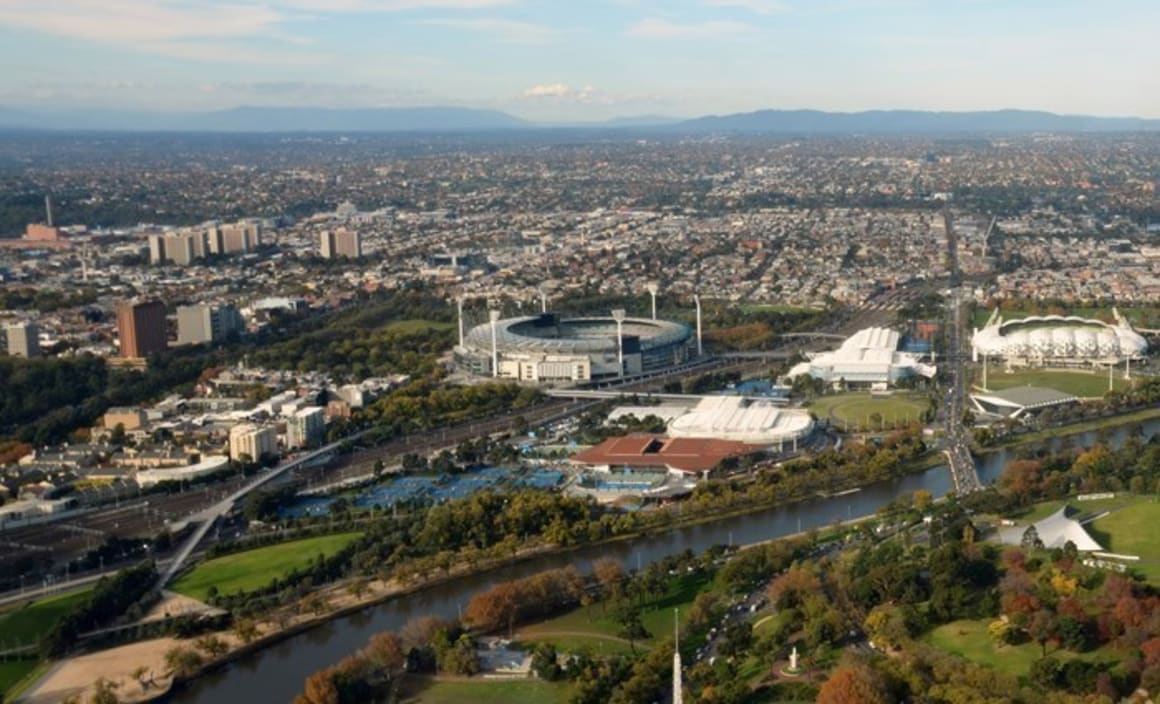East Melbourne: Not just a suburb for high-rolling property punters

GUEST OBSERVATION
The Melbourne Cricket Club (MCC) recently drew attention to East Melbourne when two of its National Trust recognised properties were sold at auction for several million dollars apiece.
It reinforced East Melbourne’s reputation as an exclusive hamlet. But do you really have to be a millionaire to acquire a slice of this luxury market?
On one hand, it is undoubtedly one of Melbourne’s more affluent suburbs, second only to Toorak on price for detached dwellings at $2,242,500 (REIV – March 2014 quarter) with values underpinned by arguably the most expensive land in Victoria. So it’s no surprise that many investors dismiss East Melbourne as the exclusive domain of high-rolling property punters.
But once you understand a little more about the suburb, you’ll realize there are investment opportunities for the more modestly-endowed investor.
Just two kilometres from the CBD and surrounded by some of the city’s most esteemed shopping and entertainment precincts, this suburb that found favour with Melbourne’s gentry in the 1800s is home to iconic buildings like Parliament House and St Patrick’s Cathedral, as well as the Fitzroy and Treasury Gardens.
Today, East Melbourne’s blend of modern high-density development, distinguished historical architecture, leafy green parklands and well-established infrastructure, make it a distinctive inner city haven for Melbourne’s discerning corporate tenants.
East Melbourne’s most prominent landmark is of course the hallowed Melbourne Cricket Ground (MCG), located in the Jolimont precinct alongside Yarra Park. Here streets lined with detached, semi-detached and terraced period homes all speak to the area’s rich heritage.
Those recently sold Georgian fronted and Victorian, Jolimont Terrace residences had been in the hands of the MCC for decades. Number 26 is an office conversion while No. 28 (reportedly built in 1865 for John Munro Bruce, father of former PM Stanley Melbourne Bruce) has been tenanted as a private four-bedroom residence.
So is East Melbourne just a millionaire’s market?
The answer lies in part with what some considered a sullying of the suburb’s blue ribbon reputation in the 1960s and 1970s, when a number of nineteenth century mansions were demolished or converted in favour of higher density housing to accommodate the city’s growing population. Concurrently, many imposing local residences built for Melbourne’s aristocracy have since been developed into apartments, in which a growing influx of career motivated “thirty-somethings” reside.
While this changing-of-the-property-guards was not without controversy, it provides today’s investors some more affordable buying opportunities.
According to the REIV, East Melbourne’s median unit price as at March 2014 was an accessible $532,250.
An investment all-rounder
East Melbourne’s owner-occupier and tenant markets are tightly held, affording investors minimal vacancy rates and consistent rental yields, as well as confidence in the area’s long-term capacity to provide sustainable growth.
This investment stronghold will benefit further from Melbourne’s latest population growth spurt, which saw a mini-boom in the vicinity of 10.% for Melbourne City and a respectable 1.5% for East Melbourne, according to the ABS Regional Population Growth 2012-13.
53% of those who call East Melbourne home are tenants. The area’s disproportionately low number of families, compared with professional singles and couples – the average household is only 1.8 persons (ABS) – is to be expected given that flats make up 70% of all local dwellings.
Investors would do well to consider the acquisition of a spacious, well-appointed one-bedroom apartment that benefits from the right fusion of character architectural features and mod cons, as well as a proven track record of long-term growth.
A lack of developable land and the local council’s dedication to maintaining East Melbourne’s historically significant character, means investors can enter the market during this quieter phase with confidence in its future prospects as a tightly held, blue-chip suburb where quality apartment stock is ripe for the picking.
East Melbourne at a glance
- Municipality – Melbourne City
- Population – 4,904
- Median age – 36 years
- Median household size – 1.8 persons
- Median house price – $2,242,500
- Median unit price – $532,250
- Average household income (weekly) - $1,989
- Average weekly rent - $415
- Average rental yield (gross) – 4.25%
- Amenities – Multiple public transport options, nearby major road arterials, public parks, sporting, entertainment and shopping precincts, numerous professional medical suites, restaurants and cafes and the Mercy Private Hospital.
Source: ABS, RP Data, REIV
Paul Nugent is a director of Wakelin Property Advisory, an independent firm specialising in acquiring residential property for investors. You can contact Wakelin on Twitter.